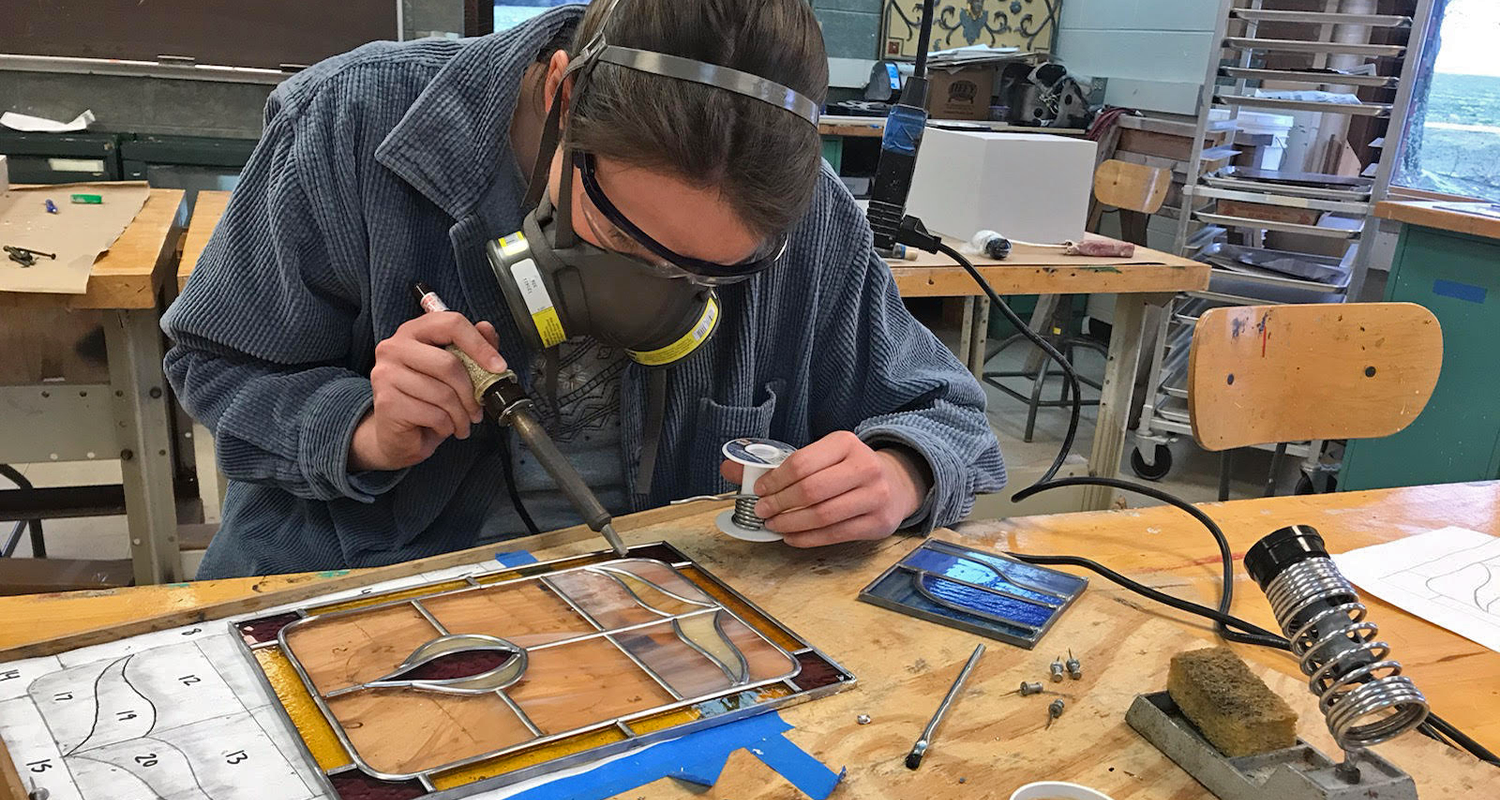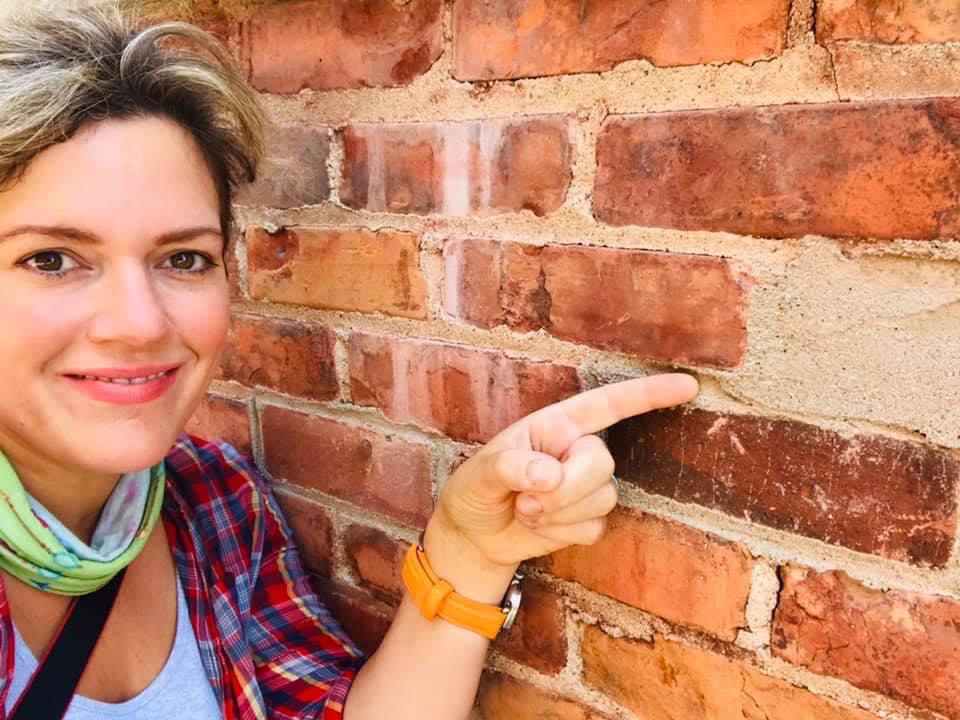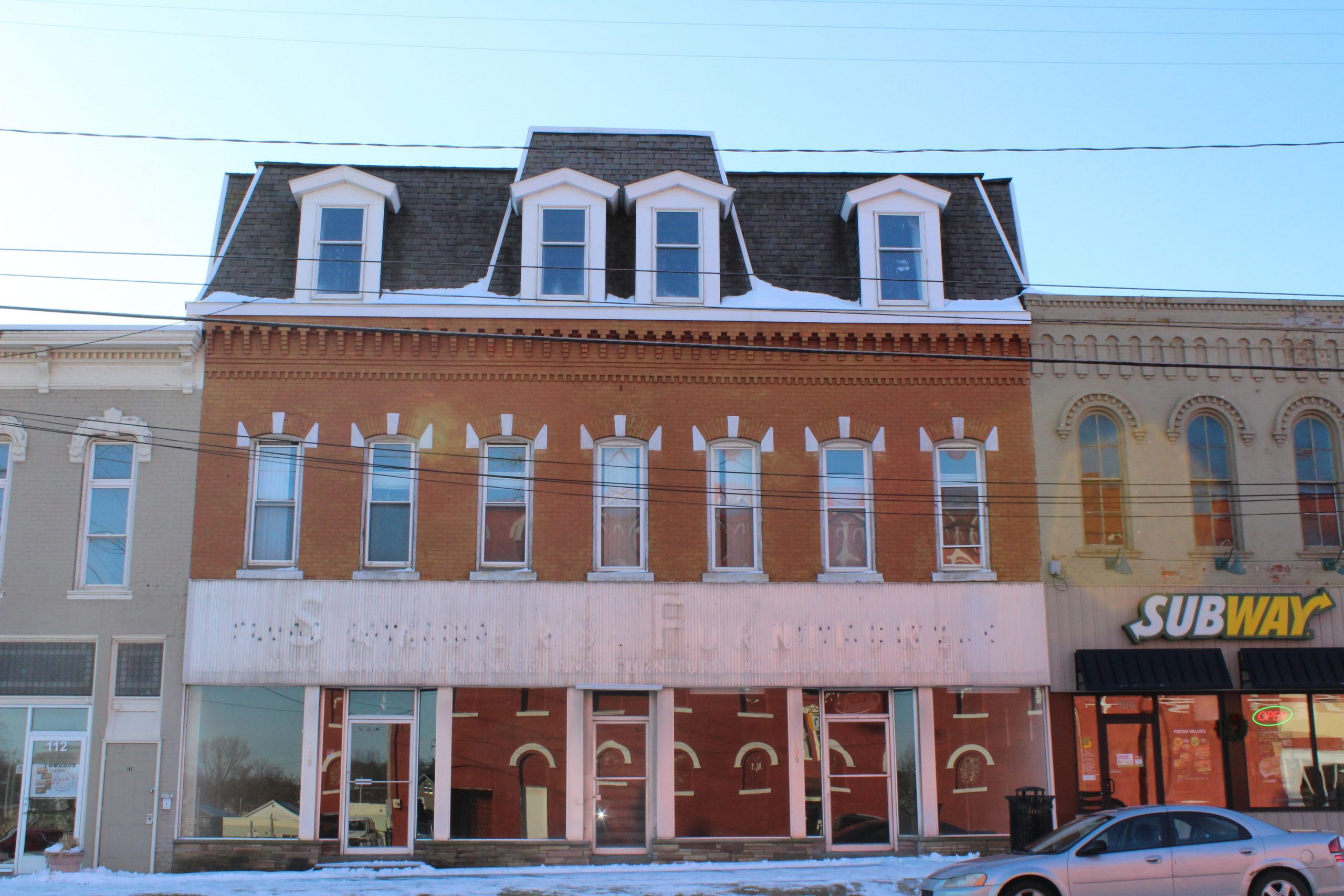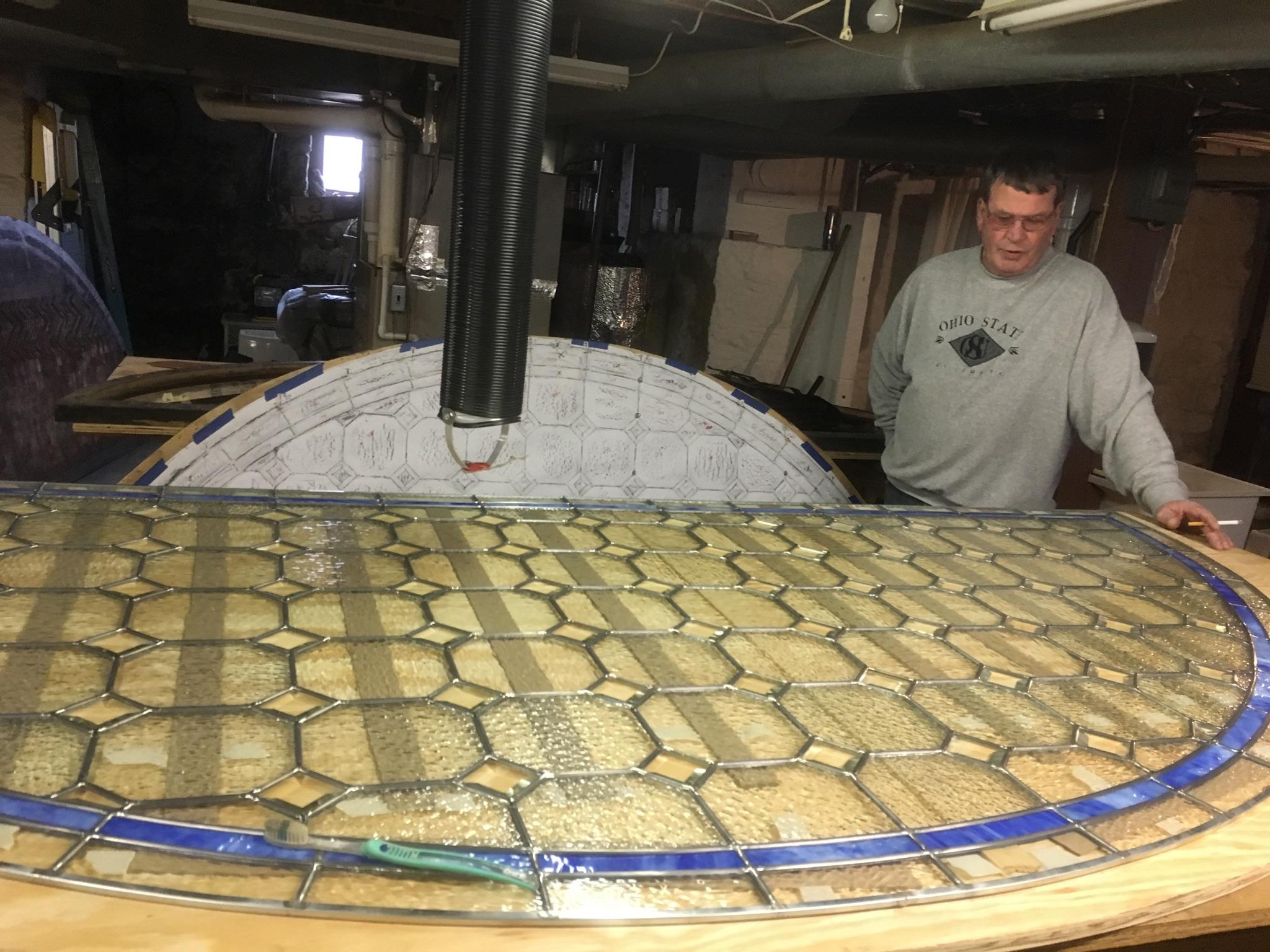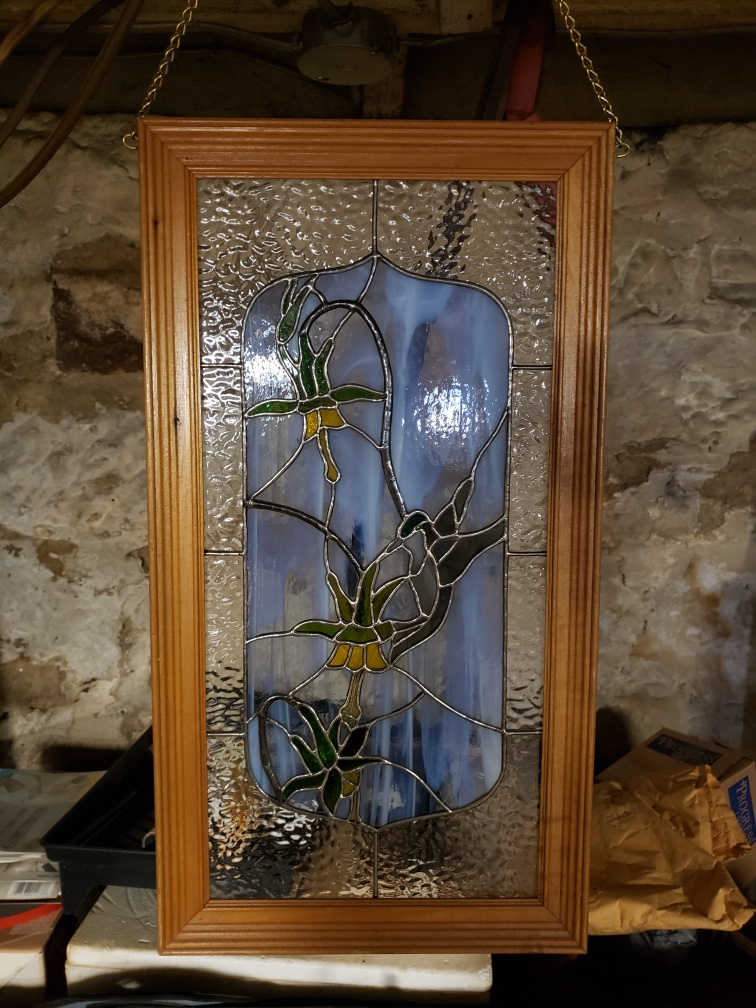There are countless buildings across the country that require a specific skill set to restore them to their former glory. Many of these skilled professionals receive their education from Belmont College, located just 15 miles west of Wheeling in St. Clairsville, Ohio. In fact, Belmont College’s building preservation and restoration program is one of the oldest and most recognized of its kind in the nation.
David Mertz, the program’s chair and founder, is a key ingredient to the program’s success. Mertz helped develop the program in 1989. Initially, administrators wanted a two-year academic program versus hands-on. Mertz suggested otherwise. “I said no, that’s not the niche. If you try to send out students in a two-year program in historic preservation they will never be able to compete with those coming from graduate programs for jobs.”
This hands-on approach gives students the tools they need to find success after graduation in a variety of niche areas of the preservation field. Previous Belmont College students have gone on to have successful careers as blacksmiths, plasterers, heritage tourism specialists, and stained glass artisans, to name a few.
While Mertz is the heart and soul of Belmont College’s building preservation and restoration program, there are a few other reasons the program has been so successful for decades – the program’s reputation, career opportunities and travel. I recently had the chance to sit down and talk with a few Belmont College graduates who have gone on to have fulfilling careers in the preservation field thanks to the skills they learned while completing the building preservation and restoration program.
The Consultants
“In my circle of preservation, if you say you went to Belmont, that’s a lot of ‘street cred.’ It’s one of the top three programs in the country,” said Jessica (Williams) Flores, owner of Preservation Forward and a mid-00s graduate of the program.
Flores grew up in the Wheeling area and is now running her own historic preservation consulting business and teaching interior design and construction management at Michigan State University.
Flores continues, “I’m not necessarily hired on to jobs because of my master’s degree. Some jobs require a qualified architectural historian – and I meet those credentials – but I get hired because of my Belmont degree. The most important part that the Belmont experience played was it allowed me to be able to have a dialogue with the contractors and the tradespeople that I work with every day in the trenches on projects here in Michigan.”
Her advice to current or future students?
“If you’re interested in that [preservation] and you like history and buildings and want to work with your hands…and want to leave your imprint on history and it won’t feel like ‘work,’ this is the field to be in.”
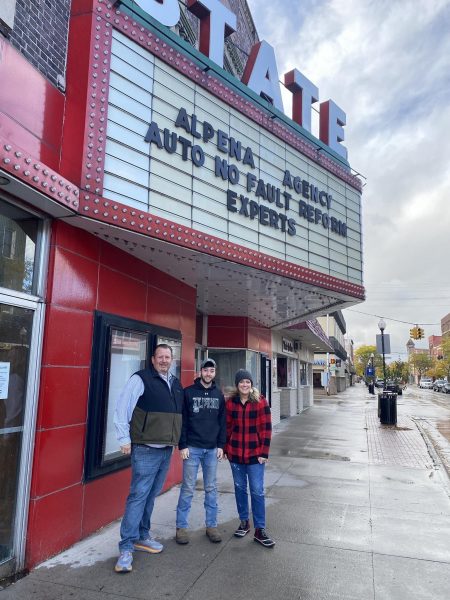
Another Belmont College graduate, Diana Wellman, was from the Cambridge, Ohio area and graduated in the late 90s. After working in the field for over a decade, she decided to take the plunge and start her own firm with her business partner Wendy Naylor, in 2009.
Wellman’s firm, NaylorWellman, acts as a liaison between owners, contractors, architects and the State Historic Preservation Offices to achieve compliance and ensure taxpayer dollars are being spent appropriately. While most of Wellman’s work focuses on historic tax credits, the skills she received as a Belmont College student informs much of her work.
“Because of my hands-on training at Belmont, there’s a certain amount of respect I bring to the sites because I have done the work. I know what it takes. I have the actual, practical knowledge. There’s a mutual respect,” said Wellman.
The Administrator
Chris Roddy’s career has taken him across the country to cities like Cedar Rapids, Iowa, Miami, Florida, Cleveland, Ohio and Mansfield, Ohio. He currently works at the Akron Zoo as their director of facilities and grounds.
“[My time at Belmont] has given me the knowledge to be able to effectively work with contractors and vendors and speak their language and, therefore, be a better administrator,” said Roddy.
His advice to students? Learn the skills.
“Don’t pigeonhole yourself. You’ll find where you end up fitting. You have the potential to go in so many directions. Take as many of the materials classes as you can because it’s only going to help. The more diverse you can be…even just in your knowledge…you may not be completely proficient in the execution of the skills, but to have the knowledge of processes and procedures has the potential to help you in ways that you may not know.”
The Restoration Specialist
Echoing this sentiment is Dan Walker, a 2019 graduate of the program and owner of The Western Preservation Company in Medina, Ohio. “I would tell students at Belmont if they’re planning to get into this on their own they should start thinking about processes and how to set up a shop. That’s important…processes.”
Walker says that there’s a lot of opportunity in the job market for the niche skills Belmont College’s program provides.
“In my area, I get calls from people saying they’ve been looking for someone to work on a house for three years and can’t find anyone who is knowledgeable enough to do this kind of work. My first summer working on my own I wasn’t even planning on starting a business. But I had a neighbor who needed some work done. They knew I had this degree…they knew two other people who could do historic preservation…since then it has blossomed. Now I have this whole summer planned out and still keep getting phone calls. I have one full-time employee and one part-time…I think I’m going to need another employee or I’m not going to be able to keep up.”
The Stained Glass Specialist
Denny Wees is a stained glass specialist who has been teaching with Mertz since he graduated from the program in the late 90s. Wees’ wandering childhood mind may have played a role in his interest in the craft. “When I was a kid my dad was what they called a ‘lay minister’ in the Methodist Church. Me being a young kid, I was more interested in looking at the pretty things which were the stained glass windows, rather than listening to my dad preach.”
“Stained glass is something I enjoy doing and it really doesn’t feel like a work project to me. It’s not like a job. If I got more into it and did some advertising, I could be as busy as I wanted to be. But right now I don’t need the extra work. I do it because I enjoy it.”
The Advocate
Frank Quinn, a Belmont College graduate and current director of preservation at Heritage Ohio, was enthralled with not only the school but the surrounding area as well. He still returns to the Ohio Valley often to visit.
“I fell in love with Wheeling and St. Clairsville and Morristown. I couldn’t imagine not coming back here regularly,” said Quinn. “My wife and I love Mt. Wood Cemetery for the artwork and the quiet and the chance to reflect. We took our daughter there with us in November. I wanted her to see what a special place it is.”
As most graduates working in the field, he still touts the benefits of Belmont.
“There’s always a need for the people who understand the process. Anytime anyone asks me about having an interest in historic preservation and what I would recommend. I tell them to make sure their education sets them apart from the crowd. One of the best ways to do that is to go through the building preservation program at Belmont.”
The New Graduate
Houston Adkins, one of the program’s most recent graduates, has been working at the Historic Preservation Training Center in Frederick, Maryland, a branch of the National Park Service. She is currently working on restoring the doors of the Memorial Amphitheater at Arlington National Cemetery.
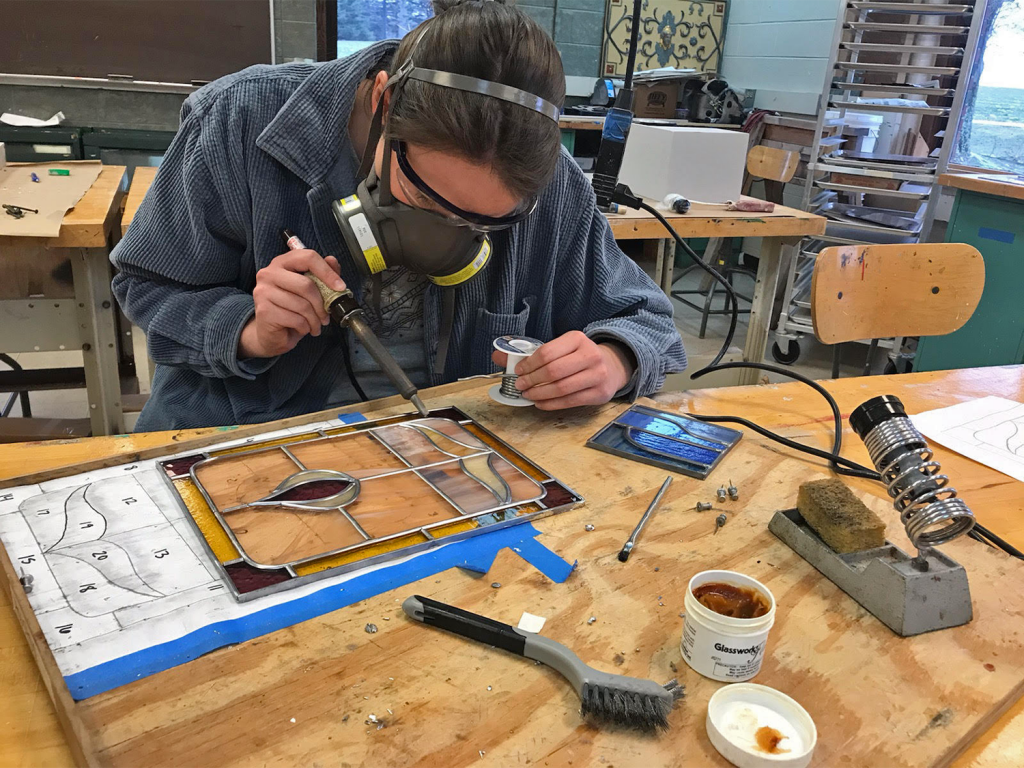
She is currently interning with The Historic Preservation Training Center in Frederick, Maryland where she is helping restore doors from the amphitheater at Arlington National Cemetery.
“I eventually want to have my own business doing general old home or building repairs and restoration remodeling,” said Adkins. She chose Belmont College for practical reasons – money and employment.
“It’s an amazing program because community colleges are reasonably priced, so I didn’t have to go into an obscene amount of debt to get my degree. I want to own my own land someday and be somewhat self-sufficient. I want a garden. I grew up that way. When I was in high school a lot of people said I was crazy and that this teenage girl was not going to be a carpenter. If you’re willing to put yourself out there and you’re willing to work, there’s definitely opportunity.”
With so many success stories, it’s easy to see why a program like this continues to flourish. David Mertz puts it simply: “I tell all young people…You get to see the country. You get to work on sites of national importance. You’re doing what you love to do.”
• Rich Wooding has been a Correctional Officer with the State of Ohio/Belmont Correctional Institution for more than 25 years. He received a Bachelor’s Degree in Mass Communication and Journalism with a minor in Philosophy from Lock Haven University of Pennsylvania in 1993. He is a U.S. Navy veteran, serving from 1985-89.


